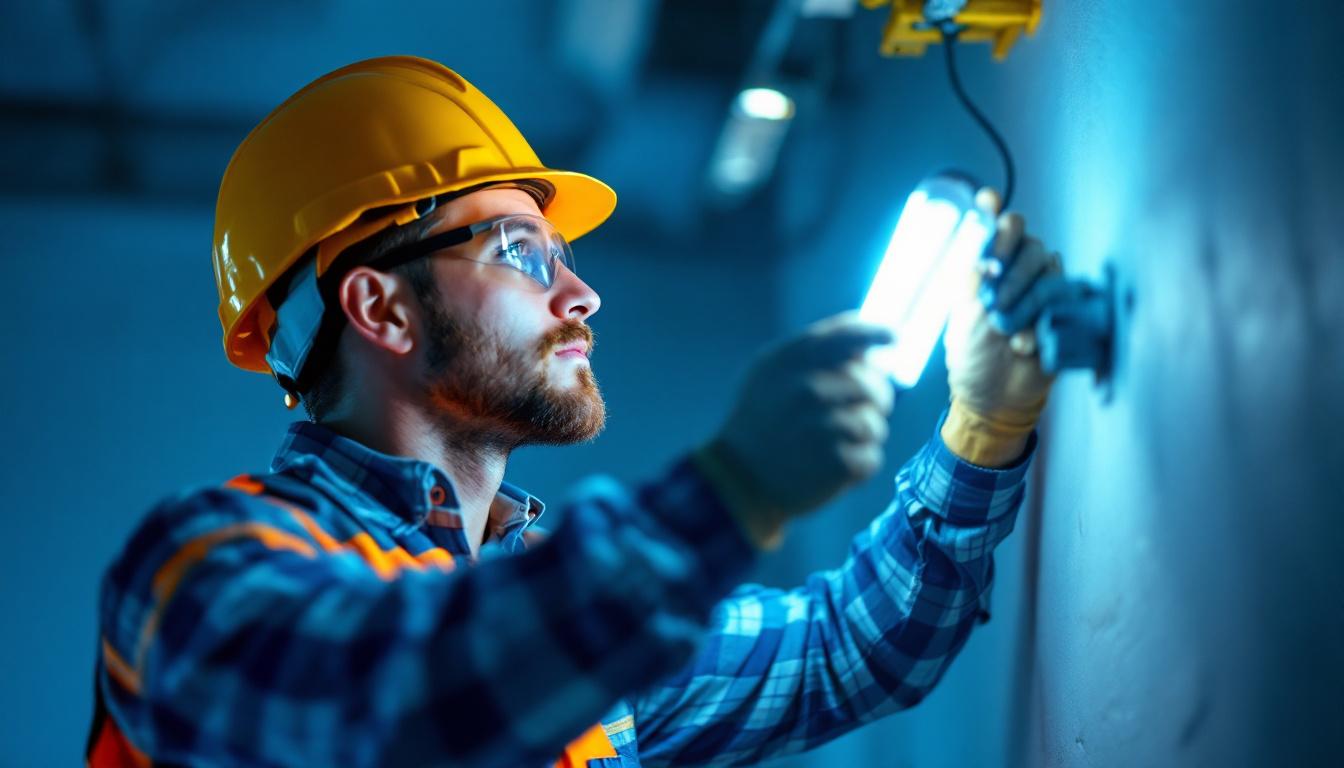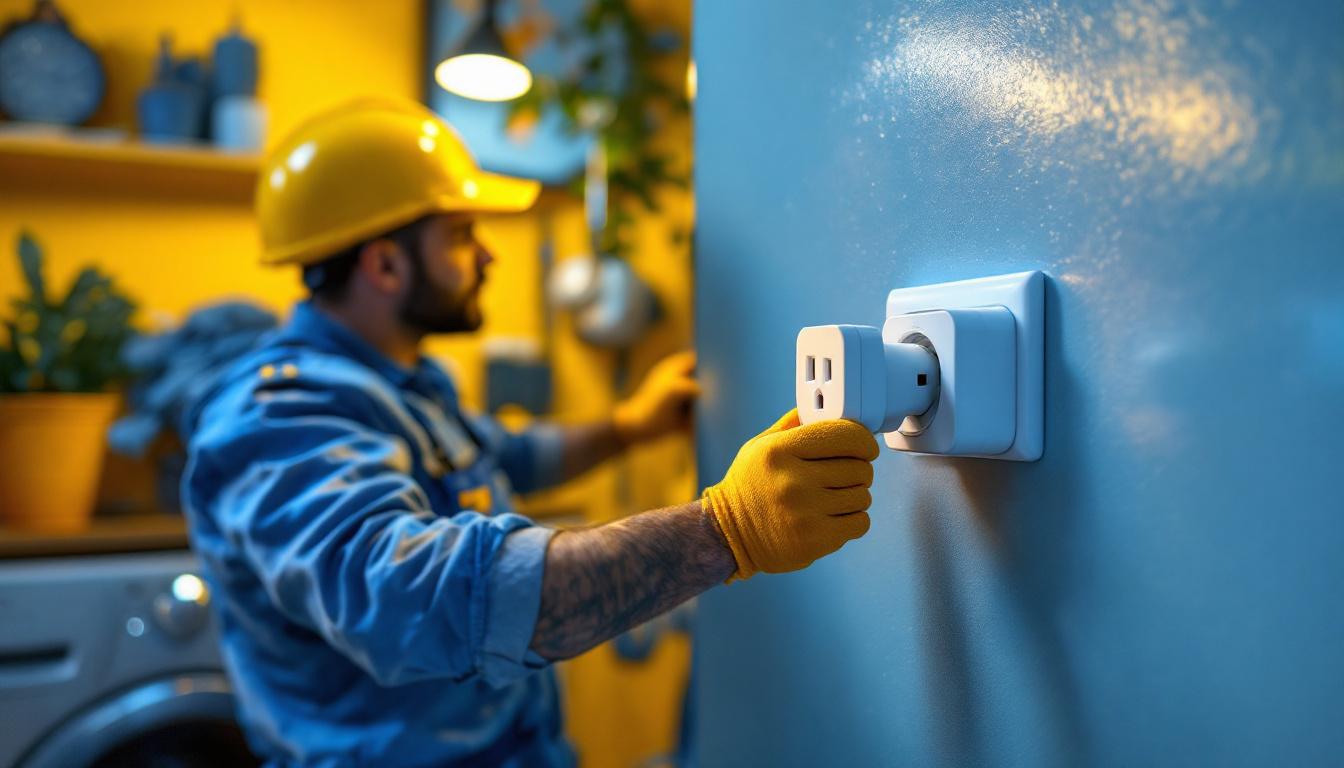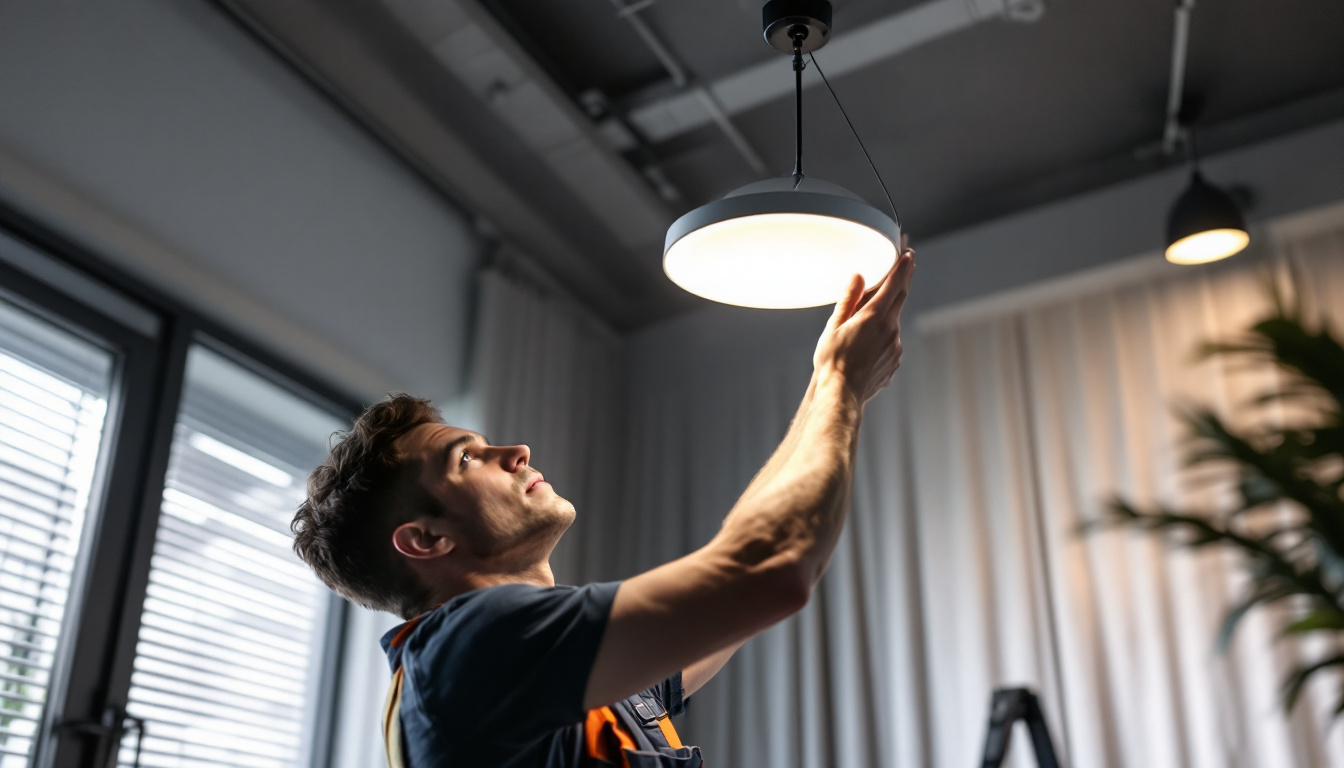
As the world of lighting continues to evolve, fluorescent light bulbs remain a staple in many commercial and residential settings. However, one of the less-discussed issues surrounding these bulbs is the potential for them to explode. For lighting contractors, understanding the risks and having the right tools can make all the difference in ensuring safety and efficiency on the job. This article delves into the essential tools that every lighting contractor should have at their disposal when dealing with fluorescent light bulbs and the associated risks.
Fluorescent light bulbs, while energy-efficient and long-lasting, can pose certain hazards if not handled properly. One of the most alarming risks is the potential for these bulbs to explode. Factors contributing to this phenomenon include manufacturing defects, improper installation, and environmental conditions.
When a fluorescent bulb explodes, it can scatter glass shards and release toxic materials, such as mercury. This not only poses a safety risk to the contractor but also to anyone nearby. Therefore, understanding these risks is the first step in mitigating them effectively. It is crucial for contractors and users alike to be aware of the specific guidelines for handling and disposing of these bulbs to prevent accidents and environmental contamination. Proper training and awareness can significantly reduce the likelihood of incidents related to fluorescent bulbs.
Several factors can lead to the failure of fluorescent light bulbs. One common cause is thermal stress, which occurs when bulbs are exposed to extreme temperatures. Additionally, electrical issues such as surges or faulty fixtures can also contribute to bulb failures. In commercial settings, where fluorescent bulbs are often used in high-intensity applications, the risk of overheating can be exacerbated, making it essential to monitor the operating conditions closely.
Another significant cause is the age of the bulb. Over time, the internal components can deteriorate, leading to a higher risk of explosion. Regular maintenance and timely replacement of old bulbs can help minimize these risks. Moreover, using the right type of ballast and ensuring that it is compatible with the bulbs can further reduce the chances of failure. Contractors should also consider the installation environment, as areas with high humidity or dust can affect the performance and lifespan of fluorescent bulbs.
Being able to identify signs of potential failure can save contractors from hazardous situations. Flickering lights, unusual noises, or a change in color temperature are all indicators that a bulb may be nearing the end of its life. These symptoms not only signal the need for replacement but can also indicate underlying electrical issues that need to be addressed to prevent further complications.
Contractors should also be aware of any physical damage to the bulb, such as cracks or chips. These can significantly increase the likelihood of an explosion and should be addressed immediately. Furthermore, it is advisable to regularly inspect fixtures and connections for signs of wear and tear, as these can also contribute to the failure of the bulbs. By staying vigilant and proactive, contractors can ensure a safer working environment and extend the lifespan of their lighting systems.
Equipping oneself with the right tools is crucial for any lighting contractor. Not only do these tools enhance efficiency, but they also play a vital role in ensuring safety when working with fluorescent light bulbs.
Here are some essential tools that every contractor should have in their toolkit when dealing with fluorescent lighting:
Safety should always be a priority. Protective gear, including safety goggles, gloves, and hard hats, is essential when working with fluorescent bulbs. These items help protect against glass shards and any harmful substances that may be released if a bulb breaks.
Wearing appropriate clothing, such as long sleeves and durable pants, can also provide an extra layer of protection. It is advisable to invest in high-quality protective gear that meets industry standards. Additionally, consider using steel-toed boots to protect your feet from heavy equipment or falling objects, which can be particularly important in commercial settings where the risk of accidents is heightened.
Removing fluorescent bulbs can sometimes be tricky, especially if they are installed in hard-to-reach places. Specialized tools like bulb pullers or extraction tools can make this process much easier and safer.
These tools are designed to grip the bulb securely, allowing for a safe removal without the risk of breaking it. Additionally, having a ladder or scaffold on hand can aid in reaching high fixtures, ensuring that the job is done safely and efficiently. It’s also beneficial to have a multi-tool with various heads, as this can help in adjusting fixtures or making quick repairs without needing to switch between multiple tools, thus saving time on the job.
In the unfortunate event that a bulb does explode, having the right cleanup tools is essential. A vacuum equipped with a HEPA filter is highly recommended for safely removing glass shards and any hazardous materials.
Additionally, having a broom and dustpan specifically designated for this purpose can help in managing the cleanup process. It is crucial to follow proper disposal guidelines for both the glass and any toxic materials to ensure environmental safety. Beyond these tools, it may also be wise to keep a first aid kit readily available on-site. Accidents can happen, and having bandages, antiseptic wipes, and other basic medical supplies can be invaluable in addressing minor injuries promptly, allowing work to continue with minimal disruption.
In addition to having the right tools, following best practices can significantly reduce the risks associated with fluorescent light bulbs. Here are some guidelines that lighting contractors should adhere to:
Ensuring that fluorescent bulbs are installed correctly is paramount. This includes verifying that the fixture is compatible with the bulb type and wattage. Contractors should also ensure that the bulb is securely seated in the fixture to prevent any electrical issues.
Before installation, it is advisable to inspect the fixture for any signs of damage or wear. Addressing these issues before installing new bulbs can prevent future problems. Furthermore, using the correct installation techniques, such as avoiding over-tightening the bulb, can help maintain the integrity of the fixture and extend the lifespan of the bulb. It’s also essential to ensure that the power is turned off during installation to prevent any accidental shocks or electrical hazards.
Regular maintenance is key to prolonging the life of fluorescent bulbs and minimizing risks. This includes routine inspections of both the bulbs and fixtures to check for signs of wear or damage.
Contractors should also keep track of the age of the bulbs and replace them as needed. Establishing a maintenance schedule can help in identifying potential issues before they become serious problems. Additionally, cleaning the fixtures regularly can prevent dust buildup, which can affect light output and efficiency. Using a gentle cleaning solution and a soft cloth can help maintain the cleanliness of the fixtures without causing damage. Regularly checking the ballast for proper operation is also crucial, as a failing ballast can lead to flickering lights or complete bulb failure.
Part of a contractor’s responsibility is to educate clients on the safe use of fluorescent lighting. Providing information on the signs of potential bulb failure and the importance of regular maintenance can empower clients to take proactive measures.
Additionally, contractors should inform clients about the proper disposal methods for broken bulbs, especially those containing hazardous materials. This not only ensures safety but also promotes environmental responsibility. Educating clients about the benefits of switching to energy-efficient fluorescent options can also be beneficial. Many modern fluorescent bulbs are designed to be more environmentally friendly and can significantly reduce energy consumption, leading to lower utility bills. Providing clients with resources or brochures on energy-efficient lighting can enhance their understanding and appreciation of sustainable practices in lighting.
Despite all precautions, accidents can happen. Knowing how to respond in the event of a bulb explosion can mitigate risks and ensure safety for everyone involved.
In the event of a bulb explosion, the first step is to ensure that everyone is at a safe distance from the area. If anyone is injured, it is crucial to provide first aid and seek medical attention if necessary.
Once safety is ensured, contractors should assess the situation and begin cleanup. Wearing protective gear is essential during this process to avoid injury from glass shards or exposure to harmful materials.
After addressing the immediate situation, it is important to document the incident. This includes taking photos of the scene, noting the time and circumstances of the explosion, and any injuries sustained.
Reporting the incident to the appropriate authorities or the manufacturer may also be necessary, especially if it involves a defect in the bulb. This can help prevent future occurrences and improve safety standards.
Fluorescent light bulbs are an integral part of modern lighting solutions, but they come with their own set of risks. For lighting contractors, understanding these risks and having the right tools is essential for ensuring safety and efficiency on the job.
By equipping themselves with protective gear, specialized tools, and following best practices, contractors can significantly reduce the likelihood of accidents. Moreover, educating clients and being prepared for emergencies can further enhance safety in any lighting project.
Ultimately, prioritizing safety and efficiency not only protects contractors and their clients but also promotes a culture of responsibility within the lighting industry. With the right tools and knowledge, lighting contractors can confidently navigate the challenges associated with fluorescent light bulbs and continue to provide quality service.
Ready to enhance your lighting projects with the highest quality tools and products? Look no further than LumenWholesale, where we provide lighting contractors with spec-grade lighting essentials at unbeatable wholesale prices. Our commitment to cutting out the middleman means you get superior products without the inflated markups, and our extensive selection is designed to meet the most rigorous industry standards. Plus, with free shipping on bulk orders, you can stock up on everything you need while enjoying the best value. Don’t compromise on safety or efficiency—choose LumenWholesale for a seamless blend of quality, affordability, and convenience. Wholesale Lighting at the Best Value is just a click away.

Discover essential insights for lighting contractors on the intricacies of installing washing machine power outlets.

Explore the impact of 450 lumens on lighting contractors’ profitability.

Discover expert strategies for lighting contractors to tackle common challenges with drop ceiling lamps.

Explore how the choice of white outdoor lamps can significantly impact lighting contractors’ profitability.